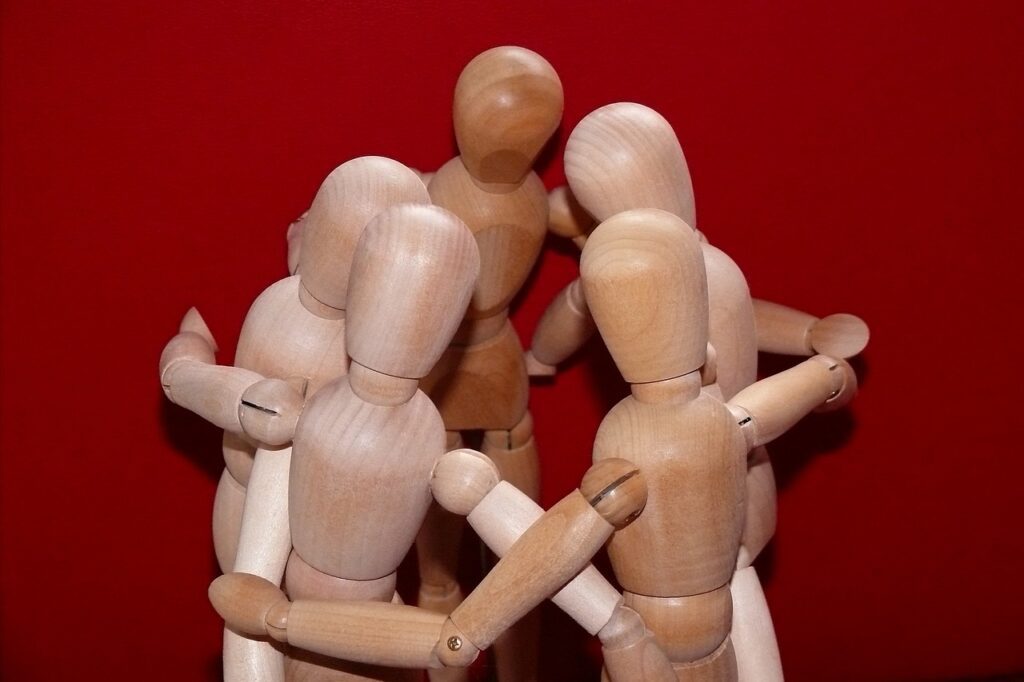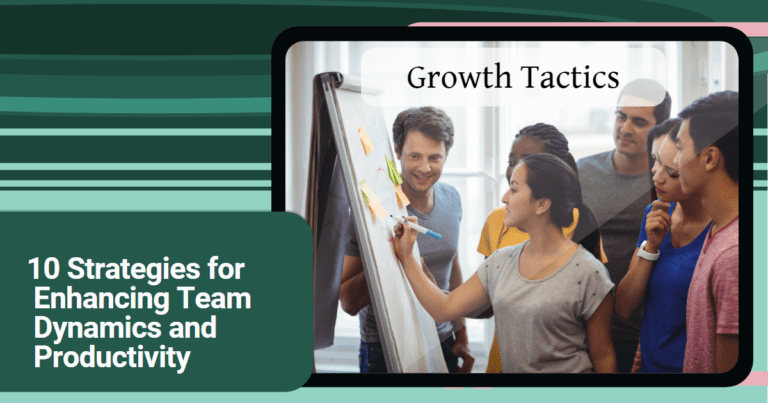Are you looking to enhance collaboration and productivity within your team? The key lies in improving team dynamics. When team members work well together, communicate effectively, and share a common goal, they are more likely to perform at their best. In this article, we will explore 10 effective strategies for improving team dynamics and creating a positive work environment. Whether you are a team leader or a team member, these tips will help you foster better relationships and enhance team effectiveness.
Jump To Section
1. Get to Know Your Team
Building strong team dynamics starts with getting to know your team members on a personal level. Take the time to understand their strengths, weaknesses, and communication styles. By creating a supportive and inclusive environment, team members will feel more comfortable expressing their ideas and collaborating with one another. This will foster trust and open communication within the team.
One effective way to get to know your team is by organizing team-building activities or social events outside of work. This will provide an opportunity for team members to connect on a personal level and build camaraderie.

2. Foster Positive Group Dynamics
Positive group dynamics are essential for creating a harmonious and productive team environment. Encourage team members to work collaboratively, share ideas, and support one another. When team members feel valued and included, they are more likely to contribute their best work and actively participate in team discussions.
To foster positive group dynamics, it is important to create a culture of respect and appreciation within the team. Recognize and celebrate individual and team achievements, and encourage team members to provide constructive feedback to help each other grow.
3. Lead by Example
As a team leader, your behavior sets the tone for the entire team. Lead by example and demonstrate the qualities you expect from your team members. Show respect, integrity, and a strong work ethic. This will inspire your team members to follow suit and contribute their best efforts.
Additionally, effective leaders actively listen to their team members, encourage open communication, and provide guidance when needed. By being approachable and supportive, you can create a positive team dynamic where everyone feels valued and motivated.

4. Improve Team Dynamics by Communicating Effectively
Open and transparent communication is crucial for improving team dynamics. Encourage team members to share their ideas, concerns, and feedback openly. Foster an environment where everyone feels comfortable expressing their opinions and where conflicts can be resolved in a constructive manner.
Regular team meetings, one-on-one check-ins, and clear communication channels can help facilitate effective communication within the team. Ensure that everyone is kept informed about project updates, goals, and expectations. This will help align team members and promote a sense of shared purpose.
5. Establish Shared Goals
Achieving common goals is at the heart of effective teamwork. Clearly define and communicate the goals and objectives of the team. Ensure that every team member understands their role in achieving these goals and how their individual contributions contribute to the overall success of the team.
When team members have a clear understanding of the team’s purpose and goals, they are more likely to work collaboratively and support one another. Regularly revisit and reassess the goals to ensure that they remain relevant and aligned with the team’s vision.
6. Identify and Address Poor Team Dynamics
Poor team dynamics can hinder productivity and create a negative work environment. It is important to identify and address any issues that may be affecting team dynamics promptly. Common causes of poor team dynamics include lack of trust, weak leadership, communication barriers, and unresolved conflicts.
Encourage open and honest discussions within the team to address any concerns or conflicts. Provide opportunities for team members to voice their opinions and implement strategies to resolve conflicts and build trust. By addressing poor team dynamics proactively, you can create a more cohesive and productive team.

7. Implement Team Development Programs
Investing in team development programs can significantly improve team dynamics and performance. These programs can include workshops, training sessions, or team-building exercises that focus on improving communication, collaboration, and problem-solving skills.
Team development programs provide an opportunity for team members to learn and grow together. They can also help identify and address any underlying issues that may be affecting team dynamics. By investing in the professional development of your team, you are investing in the success of your team as a whole.
8. Encourage Collaboration and Shared Responsibility
Collaboration and shared responsibility are key components of effective team dynamics. Encourage team members to work together on projects, share responsibilities, and leverage each other’s strengths. This will foster a sense of unity and collective ownership of the team’s success.
Assigning group projects or tasks that require collaboration can help promote teamwork and strengthen relationships within the team. Encourage team members to actively seek input from one another and to support each other’s ideas and initiatives.
9. Foster a Positive Team Culture
A positive team culture is essential for creating a supportive and productive work environment. Encourage team members to celebrate successes, acknowledge contributions, and provide constructive feedback. Foster a culture of continuous learning and growth, where team members feel empowered to take risks and share their ideas.
Additionally, promoting work-life balance and recognizing the individual needs and well-being of team members can contribute to a positive team culture. When team members feel valued and supported, they are more likely to be engaged and motivated.
10. Continuously Evaluate and Improve
Improving team dynamics is an ongoing process. Continuously evaluate the effectiveness of your team dynamics and implement strategies for improvement. Seek feedback from team members and encourage open discussions about how the team can work better together.
Regularly assess team performance, identify areas for improvement, and implement action plans to address any gaps. By continuously evaluating and improving team dynamics, you can create a high-performing team that achieves its goals and maximizes its potential.
Benefits of Positive Team Dynamics
Positive team dynamics can have a significant impact on the success of a project and the overall productivity of the workplace. Here are some of the key benefits of establishing and maintaining positive team dynamics:
Improved Communication
When team members feel comfortable communicating with one another, they are more likely to share ideas and ask for help when needed. Effective communication can lead to increased collaboration, which can help prevent misunderstandings and conflicts among team members.
Higher Levels of Trust
When team dynamics are positive, team members are more likely to trust one another. Trust is crucial in building a cohesive team that can work together towards a common goal. Higher levels of trust can also lead to improved morale and job satisfaction.
Increased Creativity and Innovation
Positive team dynamics can cultivate an environment where team members feel comfortable sharing new ideas and trying different approaches. This can lead to increased creativity and innovation, as team members are more likely to take risks and experiment with different techniques.
Better Problem-Solving
When team members work well together, they are more likely to come up with effective solutions to problems. In a positive team dynamic, team members can combine their expertise to tackle complex problems and find creative solutions that benefit the team as a whole.
Enhanced Productivity
Positive team dynamics can lead to increased productivity, as team members feel motivated to work towards a common goal. They are also more likely to support one another, which can help them overcome obstacles and achieve success together.
Common Causes of Poor Team Dynamics
Poor team dynamics can have a detrimental effect on both productivity and morale within a workplace. Understanding the root causes of these dynamics can help teams address and overcome them for better collaboration. Here are some common causes of poor team dynamics:
Lack of Communication
When team members fail to communicate effectively, misunderstandings and misalignment can occur. Issues such as unclear expectations, poor listening skills, and lack of transparency can all contribute to breakdowns in communication within a team.
Absence of Trust
Trust is the foundation of any successful team, but it can easily be eroded when team members don’t trust one another. This lack of trust can stem from individuals not delivering on their promises, withholding information, or showing a lack of respect towards one another.
Conflict and Negative Attitudes
Conflict is inevitable in any team, but when it goes unresolved or escalates, it can create a toxic environment. Negative attitudes, such as gossiping, blaming others, or harboring grudges, can quickly spread and disrupt team dynamics.
Micromanagement and Lack of Autonomy
When team members feel micromanaged or are not given autonomy in their work, it can lead to frustration, demotivation, and decreased collaboration. Micromanagement can stifle creativity and prevent team members from taking ownership and responsibility for their tasks.
Insufficient Leadership or Direction
A lack of strong leadership or clear direction can leave team members feeling confused and uncertain. Without a strong leader who sets clear goals and provides guidance, team members may work in silos, lacking coordination and synergy.
Diversity and Cultural Differences
Diversity can bring valuable perspectives and ideas to a team, but if not managed properly, it can also lead to conflicts and misunderstandings. Differences in communication styles, values, and work approaches may result in tensions and hinder effective collaboration.
In conclusion, poor team dynamics can arise from various causes, including communication breakdowns, lack of trust, conflict, micromanagement, insufficient leadership, and diversity issues. Recognizing and addressing these causes is crucial for teams to foster positive dynamics and achieve their full potential.
The Link Between Team Dynamics and Team Effectiveness
Team dynamics play a crucial role in team effectiveness. Improved communication, trust, embracing diversity, conflict resolution, and shared accountability are all key aspects of positive team dynamics. By nurturing and cultivating these dynamics, organizations can build high-performing teams that drive success and achieve exceptional results.
Conclusion
Effective team dynamics are crucial for achieving productivity and success within any team. By implementing the strategies outlined in this article, you can improve collaboration, communication, and overall team performance. Remember, building strong team dynamics requires continuous effort and a commitment from every team member. By fostering a positive and inclusive work environment, you can create a team that thrives and achieves its goals.


